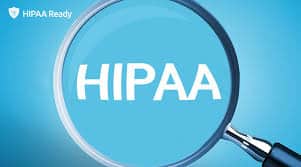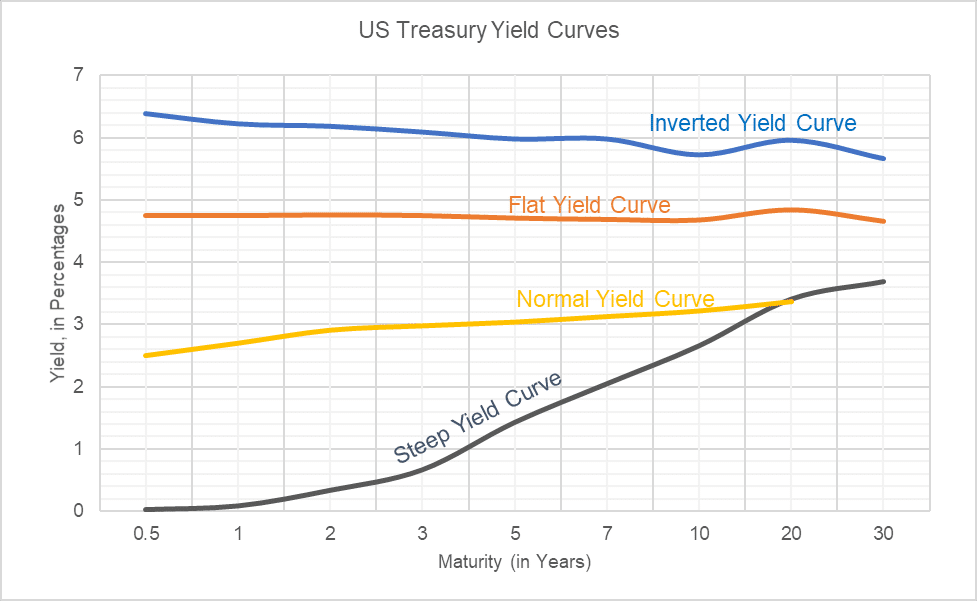A resume is an important tool in your job application because it’s where the employers get the first impression about you. That’s why it is important to write a good resume, taking care to include your relevant abilities and skills and why you’re a good fit for the job. And just in case you’re learning about a resume for the first time, we’ll explain it in detail in this article, pointing out how it’s different from a cover letter.
What Is a Resume?
A resume is a formal document created by a job candidate to list their qualifications for a position. A resume is typically accompanied by a tailored cover letter in which the candidate expresses interest in a certain job or organization and draws attention to the most pertinent details on the resume.
How Should A Resume Look In 2023?
Clear, simple wording is essential. “The truth is that most resumes are illogical. They are loaded with jargon, overly technical, and riddled with redundancy. Try reading a CV that isn’t yours, and you’ll quickly realize that it feels like it was written by an alien,” McGovern adds. Put yourself in the shoes of a recruiter who doesn’t understand your role—how can you make your resume available to them?
The hiring manager is also concerned with more than simply you and you alone—they are concerned with you in relation to them. According to Yurovsky, “hiring managers want to check if a candidate fulfills the specifications” of the post they’re looking to fill. “Your resume should portray this image so that the hiring manager understands not just what day-to-day responsibilities you can do, but also why you, above all others, add value to their firm.”
Importance of a Resume
A resume is important since it helps to demonstrate why you’re a good fit for a job right away. In today’s competitive professional job market, a resume is frequently a prerequisite for progressing in the interview process. Here are some of the reasons why you should have a CV when looking for your next job. The importance of a good resume is given as follows:
#1. A resume helps you describe your relevant abilities and experience.
To potential employers, a well-structured resume clearly displays your most appealing abilities and expertise. This enables them to proceed with the best applicant. For this reason, it’s critical that your most recent talents and experiences are reflected in your CV. A strong resume employs formatting features such as color, appropriate margins, and design to ensure that relevant work experience is displayed in a way that promotes accomplishments.
#2. Shows the benefits you provide to employers.
More significantly, a resume should inform companies about what you provide to the firm rather than just listing your abilities and expertise. Instead of simply stating that you are a “top performer,” add you “achieved $250,000 in new media sales in one year” if you are applying for a sales position. This enables companies to quantify the value you offer to the organization.
If you can use three or four achievements or related experiences that provide verifiable metrics beneath each element. Consider utilizing numbers and phrases such as boosting profit or reducing loss by 5%, increasing a social media following by 1,500 users, or increasing sales by 10% in your resume.
#3. Draws employers’ attention
The section of the resume known as “above the fold”—typically the top quarter of the resume—is the most eye-catching. In addition to your name and contact information, include crucial concise information above the fold. Using a layout that allows for proper colors or graphics is another technique to catch an employer’s attention.
Some people will advertise themselves to employers by using a headshot portrait or a personal logo. If you must print your resume, always choose a resume paper stock that stands out. There are numerous possibilities available, therefore when picking on paper, keep industry standards in mind.
#4. It matches you to the job.
A strong CV ties your expertise to the requirements of the position. One approach to accomplish this is to ensure that your CV has the same keywords as the job description.
For example, if the job description requests “knowledge of JSON,” mention “JSON” on your resume. Employers will be able to filter what qualifies you for the position if you do this. Some employers auto-sort resumes based on keywords if you send them online. Pay attention to these if you want your resume to be seen.
#5. Has the potential to lead to an interview
Finally, an excellent CV will allow you to proceed to the following phase in the process: interviewing. To be considered for a position, you’ll almost certainly need to go through at least one interview, thus having a CV is necessary.
How Do I Make An Impressive Resume?
Whether you’ve never written a resume before or need a nice, thorough refresher on the process, follow these steps to craft a compelling resume.
#1. Select Your Format
Before you begin typing anything, you must decide how you want the whole resume to look.
Resume builders can be useful for this phase because they will collect all of your fundamental information and organize it for you, saving you time.
However, it is typically safer to start with a blank slate and gradually progresses to a more complicated layout. (If you still need a spot to write all of the relevant information before you begin, see our resume outline.) This allows you to course correct, update, and re-write your resume, and select the ideal resume style for your specific situation (after all, not everyone has a professional trajectory that is easily compartmentalized).
In general, you’ll probably cover and/or include sections on the following topics:
- Your employment history
- Your extracurricular activities, such as professional groups, community involvement, or side projects
- Credentials and Education
- Your abilities (particularly hard skills) and interests
#2. Begin with the Fundamentals
Always put your contact information at the top of your resume. In this heading, insert anything that would be useful for a recruiter to contact you. Typically, this entails including:
- Your whole name (preferably the name you use across the web)
- Your contact information
- Private email address
You may also include other essential information, such as your LinkedIn or personal website URL, GitHub (for technical employment), social media profiles (if applicable), or address. If you want to relocate for a job, you can leave out your address or write “open to relocating” to increase your chances of getting an interview.
The important thing is to make this part as clear as possible. There’s little use in refining the rest of your résumé if a hiring manager can’t reach you.
#3. Include Your Work Experience
This section will most likely be the majority of your resume. Employers want to see where you’ve worked, what you’ve done, and the impact of your work to get a sense of your history and skills, even if you’re changing careers.
Your “Work Experience” could be one area, or you could divide it into “Relevant Experience” and “Additional Experience” to highlight the professions that hiring managers should pay attention to. In any case, you’ll nearly always want your most recent experience at the top and your older experience at the bottom.
Include each official employment title, the company (and maybe its location), and the years you worked there in your work experience. Below that, include two to four bullet points that explain what you performed in that employment, the skills you developed and practiced, the tools you used, and the outcomes of your efforts. If you accomplished a lot during your time there, prioritize the responsibilities that had the most impact or those you are most proud of, as well as those that best fit you with the job you’re applying for (more on that in the following sections). It is critical to include both quantitative and qualitative successes, if applicable.
If you’re referring to previous jobs, your resume bullets should be in the past tense; otherwise, they should be in the present tense. Furthermore, each bullet should begin with a powerful action verb that best expresses what you did. Also, if you have examples of your work, consider connecting to them here.
If you have a lot of experience and this section is getting too long (read: more than one page), consider removing your oldest positions unless they are extremely related to the job you’re looking for or exceptionally impressive for your profession.
#4. Include volunteer work or other relevant experience.
Anything you’ve done that isn’t work experience—a side gig, volunteer work, or unique projects, for example—can be organized into clearly designated sections (“Volunteer Experience” or “Activities”). These things may be worth noting depending on how extensive your work experience is, especially if they’ve helped you level up your skill set or better align you with your dream job. Furthermore, they make you appear more well-rounded, passionate, and hardworking.
If you’re a recent graduate, you may include a section for on-campus activities like clubs, organizations, or leadership experience. If you’re looking for work, this can be an excellent addition. You can format these similarly to professional jobs, including your title, the name of the company, and bullet points summarizing your role and accomplishments.
#5. Include your education
If you’re still in school or have recently graduated, your education should be near the front of your resume; otherwise, it should be near the bottom. Most people add their school, graduation year (for those who have been out of school for less than a decade), major, and degree. New graduates may additionally include their GPA, honors and awards, study abroad, thesis, or other important accomplishments. However, keep this section brief because you don’t want it to take up too much space in your work experience.
It’s possible that you have a specialized educational experience, such as taking an online course or earning a certification. Include it if you did it intentionally to advance your career within your sector. Again, list everything in reverse chronological order, so a graduate degree would come before an undergrad degree, and a more recent relevant online course would come before that.
#6. Finish with some skills and interests
The talents portion of a resume is often overlooked, yet it is just as crucial as the rest of the information you include. It’s a short list that a recruiter can check to see whether your skill set matches what they’re looking for. It’s also ATS-friendly (ATS stands for “applicant tracking system,” the robot that examines your resume before a human does in some circumstances) because it allows you to include keywords that the computer is looking for.
This part is usually near the bottom of your resume. However in some situations, such as a skills-based resume or when someone is changing fields, it may be moved up.
What precisely do you include here? You should include any hard skills and apps you’re familiar with (for example, Photoshop, SEO, and JavaScript), as well as your level of experience, if applicable. Soft talents, such as time management and public speaking, should be saved for your bullet points instead.
Filling in your skills should be done strategically. Don’t state things you couldn’t do at a high degree of proficiency (I’m looking at you, “excellent” Excel users), and exclude talents that are utterly irrelevant to the job you desire. If you’re looking for a design position, for example, you might not even need to include Excel unless it’s a job requirement.
#7. Create a summary statement for your resume
You’ve probably heard of a resume summary statement. They aren’t very popular, but they can be good to put near the beginning of your resume if you want to offer clarity or context. If you’re changing careers, a summary statement can help you justify your decision and tie your previous experience to your new path. If you’re a more seasoned professional, you can utilize a summary statement to emphasize a theme that connects your work path.
#8. Customize It for the Job (and the ATS)
Once you’ve written your resume—you’ve broken down your work experience, added some activities and extra experiences, and listed out your skills—critical it’s to go back to the job description (or multiple job descriptions, if you’re applying to several similar jobs) and ensure that what your resume says matches up with the type of candidate the employers are looking for. In other words, customize it.
You should begin by confronting the ATS. This entails combing over the job description to determine whether certain words and phrases match. What talents are they looking for, and have you listed them (assuming you have them)? What terms do they use to describe their ideal hire, and do you use language like that in your resume?
Take a bird’s-eye look next. Where on your resume would you look if you were the recruiting manager for the position? And what are you looking for? Make sure that whatever you believe will be most important to the recruiter is near the top of your resume or otherwise highlighted.
Finally, investigate the job’s role and responsibilities. Is your resume filled with comparable experience? If not, can you spin it so that it’s evident you’re capable of doing the job (and doing it well)?
#9. Edit and Improve It
Please, please don’t just write your CV and send it out without looking it through. Hiring managers may not spend hours going over it, but one item stands out above all others: a blatant error.
First, write a rough draft, then leave and return to it later with fresh eyes to edit.
Cover the fundamentals: Is your contact information up to date and correct? Do you have the correct verb tenses? In terms of spelling and punctuation, does everything appear to be consistent and correct?
Then, if your resume is quite extensive, make some cuts. It’s no longer a hard and fast rule that all resumes must be one page long—but it’s a good starting point for most applicants, especially if you have less than ten years of experience. The exception is if you’re a really senior or established professional; in this case, a two-page resume isn’t absolutely out of the question.
What Is The Difference Between A Resume and A Cover Letter?
A cover letter and a resume both serve the same purpose: to demonstrate that you have the necessary skills to flourish at the job for which you are seeking.
However, there are significant differences in the form and intent of the two documents. Many employers demand a resume to be provided along with a job application, but a cover letter is not always required. Here is a breakdown of the differences between a resume and a cover letter:
- A resume is a general review of your work experience, while your cover letter is a specific explanation of your work experience relevant to the job at hand.
- A resume details your work history. It outlines your previous jobs, education, certifications, talents, and other measurable facts about your history and work experience. A cover letter demonstrates how your qualifications make you a good fit for the job.
- A resume includes a list of your contact information, an experienced part that includes work names, position descriptions, dates of employment, an education section, other relevant information, and a summary of your qualifications. A cover letter is formatted like a letter, with a salutation, several paragraphs, and a closure.
- A resume is often written in the third person, while a cover letter is written in the first person.
What Should You Not Put On A Resume?
You wouldn’t want your resume to look too busy, so you should avoid putting too much information on your resume. Avoid using a solid wall of text, use brief sentences, and avoid spelling mistakes and grammatical errors.
What Is The Best Color To Use On A Resume?
The best colors to use on a resume are black, white, and blue.
What Is The Most Attractive Resume?
The reverse-chronological resume structure is the most attractive resume format. This resume style entails listing your resume information beginning with the most current and working backward through applicable positions, degrees, or credentials.
In Conclusion,
A good resume should outline your skill sets and relevant work experience. It should give the employees insight into what you’re able and willing to offer the organization. A resume is different from a cover letter, but they can both be used for job applications.
Related Articles
- 53+ Hard Skills And How To Highlight Them On A Resume
- BEGINNER SKILLS FOR RESUME: 15 Top Skills, Tips & All You Need !!!
- Top 33+ Resume Action Words To Make Your Resume Irresistible
- LIST OF THE TOP ESSENTIAL SOFT SKILLS FOR RESUME IN 2023 (+ Free Tips)
- HOW TO LIST SKILLS ON A RESUME: Best 2023 Practices (+ Free Tips)






